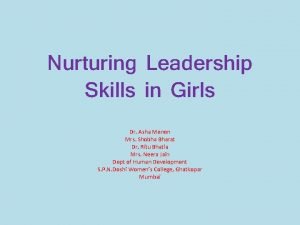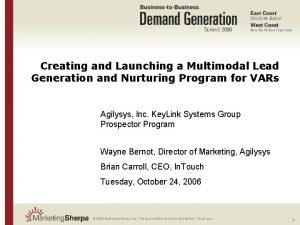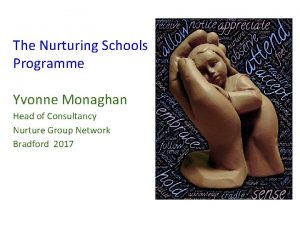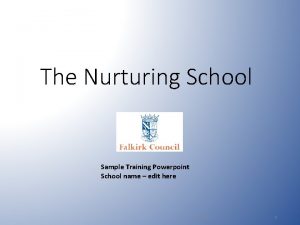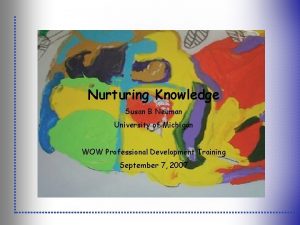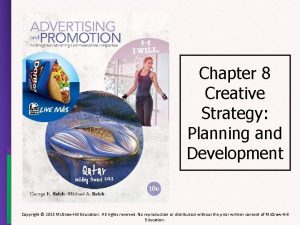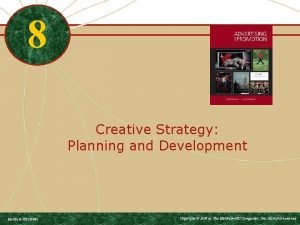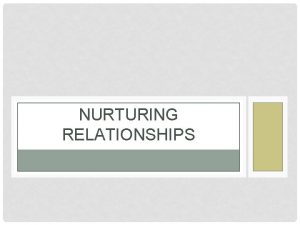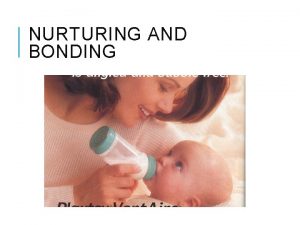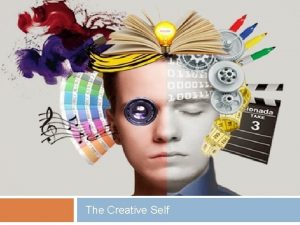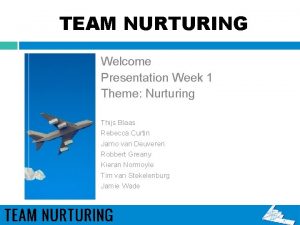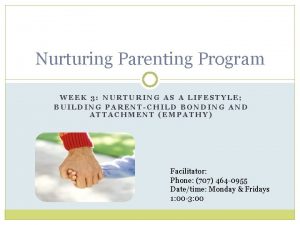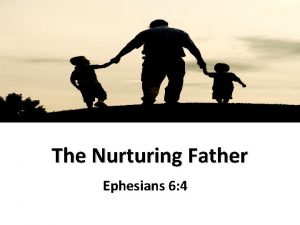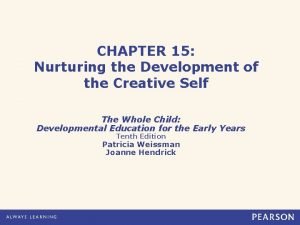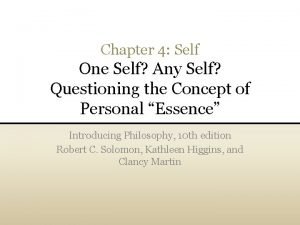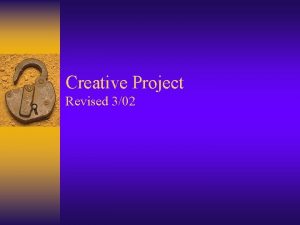NURTURING THE DEVELOPMENT OF THE CREATIVE SELF Chapter










- Slides: 10

NURTURING THE DEVELOPMENT OF THE CREATIVE SELF Chapter 15

What is Creativity? • Away of thinking and processing the world rather than the production of art projects • Creativity plays a significant role in the cognitive development • Creative thinking involves imagination, the production of new ideas and testing them • Creativity focuses on the process of forming original ideas through exploration and discovery • The process what is most important, not the product • Children creative expressions can be seen in drawings, painting, singing, dancing, building with blocks, dramatic play, and so forth

Four Essential Components of the Creative Process (Paul Torrance) 1. Fluency – the ability to produce a number of deferent ideas 2. Flexibility – the ability to approach situations and develop solutions from a number of different perspectives 3. Originality – the ability to have a new or novel idea 4. Elaboration – the ability to extend ideas The Torrance tests of creativity thinking (TTCT) are the most widely used tests to measure children’s creativity since 1960 s

Creativity Support Emotional Development • Help children express their emotions • Helps develop multiple intelligences • How teachers can help – encourage children to express their feelings, “I hear that you are angry right now. Why don’t you paint a picture of what that feels like? ”

Creativity Supports Social Development • Singing, painting, dancing, playing make-believe are all much more fun when done with friends. Children learn to pay attention to others as well as the rules of social giveand-take • How teachers can help – encouraging children to pair up or work in small groups and discuss their ideas with others. Displaying children work on the wall and let the children critique the work in a constructive way

Creativity Supports Physical Development • Creativity develops fine-motor skills (cutting, drawing, tearing and eye-hand coordination) • Creativity develops large-motor skills (movement, dance activities) • The bodily-kinesthetic intelligence – involves handling tools and objects skilfully

Creativity Support Language and Literacy Development • Combine verbal storytelling with artistic creation – taking dictation while the child is painting/drawing or creates out of clay/playdough, using puppets to retell the stories • Encourage Children to work together, and language will flow • Incorporate listening and music activities - offer musical instruments to experiment with and listen to. Ask them to talk about their favorite sounds that them make • Ask open-ended questions about the child’s creative work (“how do you make green? ) • Offer tools and materials to develop eye-hand coordination – cutting, drawing/writing

Creativity Supports Cognitive Development • Creativity enhances mathematics learning – measuring with rulers in their woodworking, counting people they drew, grouping and classifying as they build with blocks/legos • Creativity enhances science learning – hypothesis forming and testing (making something from clay). Children discover physical properties of objects • How teachers can help – respecting children’s ideas and valuing their divergent thinking

The Stages of Development in Children’s Creativity • Exploration of materials – 2 s and 3 s explore paint and brushes using their senses before creating something • Nonrepresentational stage – paintings have more design and intention, but not recognizable by anyone but the painter • Representational stage – children plan what they are going to paint (ages 4 -6) and their work can be recognizable

What Can Teachers Do to Nurture Children’s Creativity • Allow countless opportunities for creative experiences and exploration • Focus on process, not product • Use lots of self-expressive materials to foster the creative self • Remember to make self-expressive opportunities available for children with disabilities • Provide enough materials • Foster an appreciation of beauty – display children’s work around the classroom
